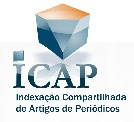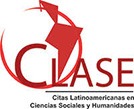A Iberian overseas expansion and its influence on the cartography of the sixteenth century
the copies of Juan de la Cosa (1500) and Cantino (1502)
Abstract
The present article aims to present a proposal for an imaginary analysis of the Iberian visions in the initial moment of map composition from the knowledge of the new lands in the West, the so called New World. For this purpose, a comparison of the particular characteristics of the cartographers’ social context is carried out in order to go beyond a study centered only on the cartographic product, without considering the specific historical context of the producing individuals and their societies. This form of study is based on the methodology proposed for the studies of the History of Cartography seeking a deconstruction of cartographic objects. Thus, comparing the map of the Spanish Juan de la Cosa (1500) and the anonymous Portuguese exemplary known as the Cantino map (1502) makes it possible to analyze the images constructed from diverse political views that would be related to the interests of both the Crown of Castile and of the Crown of Portugal – including his subjects – after the signing of the Treaty of Tordesilhas, on June 7, 1494.












